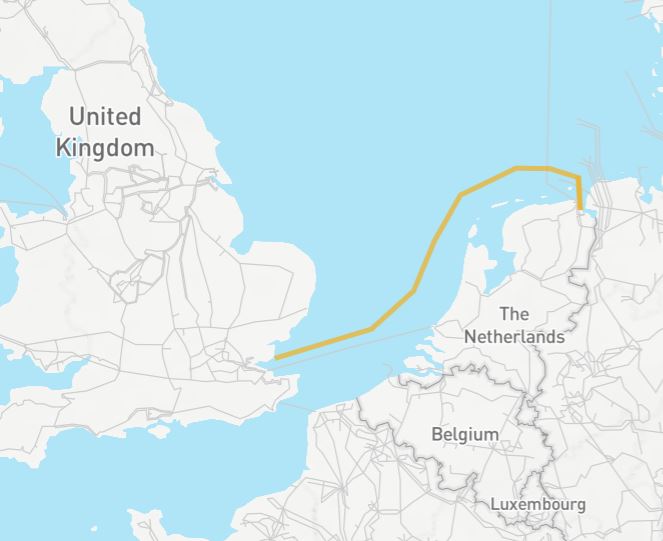A consortium of 20 lenders led by the European Investment Bank (EIB) has agreed to provide €400 million ($406.5 million) for the NeuConnect interconnector project – a €2.8 billion high-voltage direct current link that will connect Germany with the United Kingdom.
“The investor consortium is led by French investor Meridiam, Allianz Capital Partners, and Japanese company Kansai Electric Power,” the EIB said in a statement released. “Alongside the EIB, other promotional banks include the UK Infrastructure Bank and the Japan Bank for International Cooperation (JBIC).”
The bank said construction on the project should begin by the end of this year, with completion being scheduled for 2028.
The predominantly submarine cable will have a length of 725 km, a capacity of 1.4 GW, and a DC voltage of 525 kV. It will connect a converter station operated by Tennet near Fedderwarden, in Germany, to the UK network operated by National Grid via a converter station on the Isle of Grain.
German conglomerate Siemens will build the converter stations and cable manufacturer Prysmian will deploy the cable.
In September 2020, Tennet and National Grid announced a cooperation agreement to explore the feasibility of connecting Dutch and British wind farms to the energy systems of both countries via subsea electricity cables called interconnectors. Under the terms of the cooperation agreement, the two grid operators will explore the development of a multi-purpose interconnector (MPI) to simultaneously connect up to 4 gigawatts of British and Dutch offshore wind between the British and Dutch electricity systems, providing an additional 2 GW of interconnection capacity between the countries.
This content is protected by copyright and may not be reused. If you want to cooperate with us and would like to reuse some of our content, please contact: editors@pv-magazine.com.




Maybe Google Fedderwarden before losting a picture, that clearly shows a line to the Netherlands.
Can someone clarify for me which direction energy will flow .. are the customers in Germany or in the UK?
Either.
Interconnectors flow both ways depending on who needs it the most.
Currently for example UK and Germany are heavily supplying via interconnectors,many time this amount too France,as Thier nukes are mostly off due to cracks and corrosion.
The chart is wrong. It is Eemshaven what is shown.